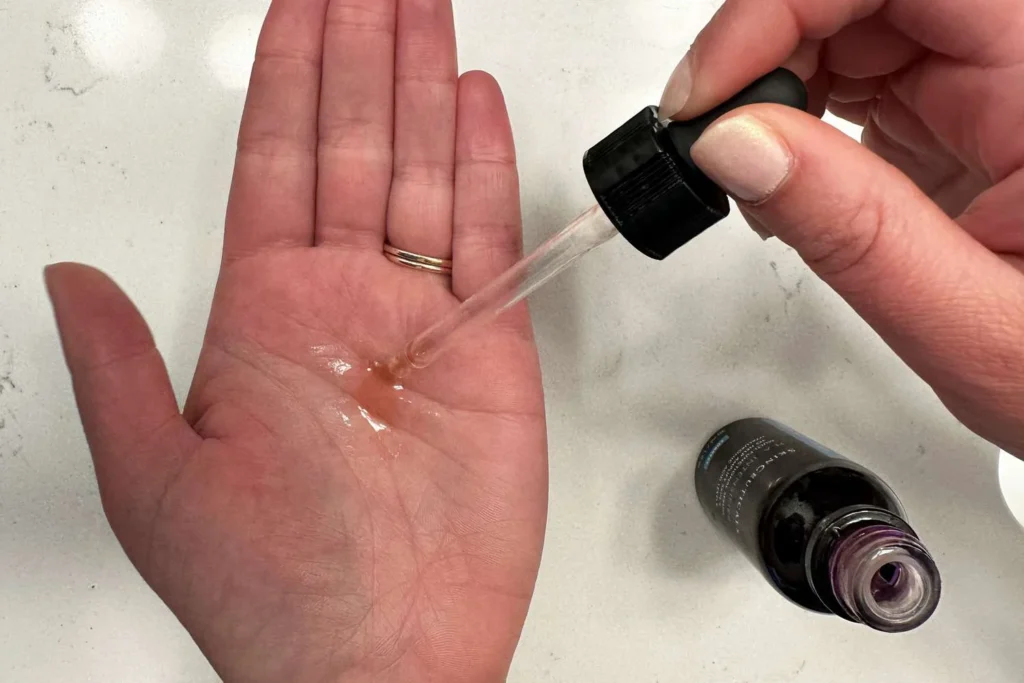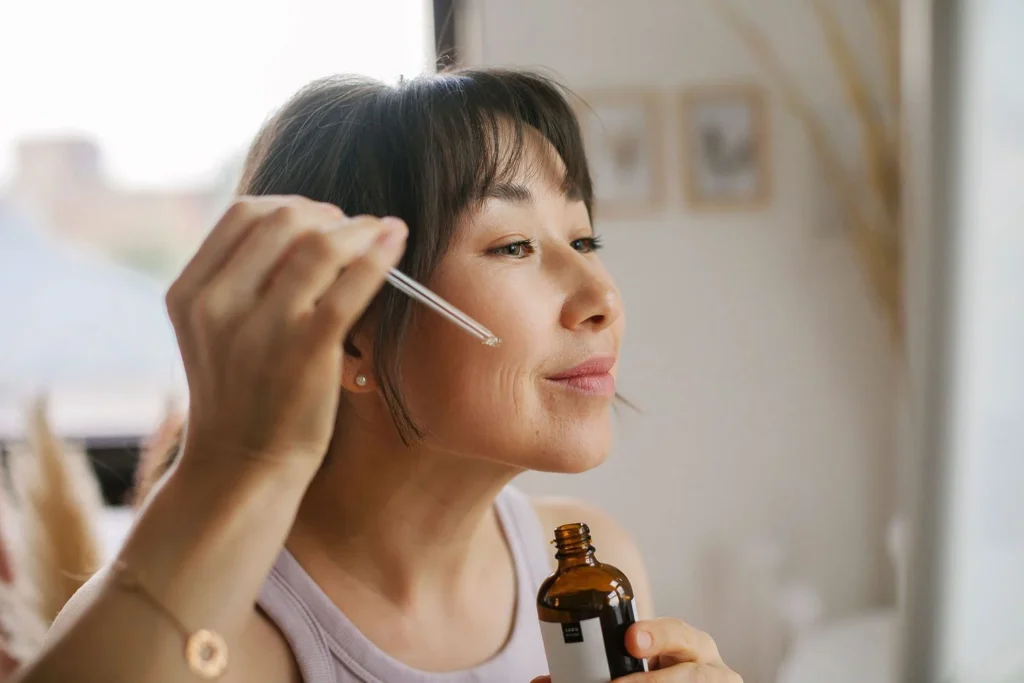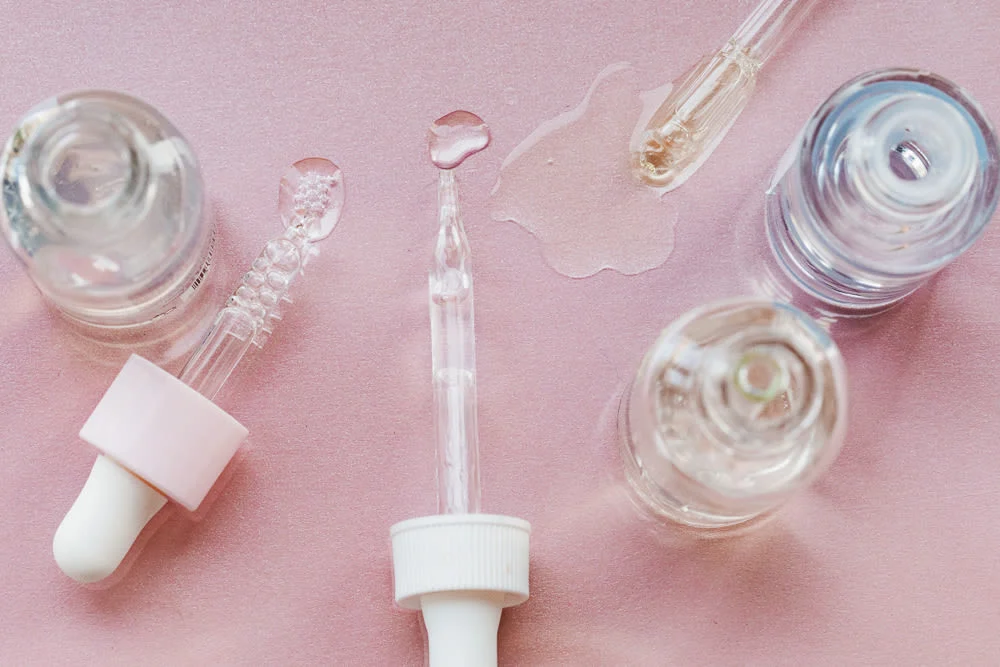Hyaluronic acid. It’s the undisputed hydration hero of the skincare world, praised by dermatologists and beauty editors alike. You’ve probably heard it can hold up to 1,000 times its weight in water, promising plump, dewy, glass-like skin. But here’s a question I often hear from my clients: are you actually using it correctly?
The magic of this powerhouse ingredient lies not just in 何 it is, but in どのように そして いつ you apply it. Get it wrong, and you could be unknowingly drying your skin out. Get it right, and you unlock a level of hydration you didn’t think possible. Let’s dive into making this ingredient truly work for you.
First Things First: What Is Hyaluronic Acid and Why Does Your Skin Need It?
Before we get into the “when,” let’s quickly cover the “what.” Think of hyaluronic acid (HA) as a “moisture magnet.” It’s a sugar molecule that occurs naturally in our bodies—in our skin, joints, and eyes—acting as a lubricant and cushioning agent. Its primary job is to grab onto water and hold it, keeping things hydrated and plump.
Unfortunately, as we age, our natural reserves of HA deplete. This is one of the reasons skin can become drier and fine lines more noticeable over time. When we apply it topically through a serum or cream, we’re essentially replenishing that moisture and giving our skin a big, juicy drink of water. The result? Skin that looks and feels smoother, bouncier, and visibly more hydrated.
The Golden Rule: How and When to Apply Hyaluronic Acid Serum
This is the core of it all. Timing and technique are everything.
Morning or Night? The Simple Answer is Both!
One of the most beautiful things about hyaluronic acid is its versatility. It’s not a demanding diva ingredient; it’s a supportive friend your skin can rely on anytime.
- In your morning routine, it acts as an immediate hydration shield, plumping the skin to reduce the look of “sleep lines” and creating a smooth canvas for makeup. It also helps fortify your skin’s moisture barrier against environmental stressors you’ll face throughout the day.
- In your evening routine, it works to replenish any moisture lost during the day. As your skin goes into its natural repair mode overnight, HA provides a sustained source of hydration, helping you wake up looking refreshed.
The Most Important Tip: Always Apply to Damp Skin
If you remember only one thing from this article, let it be this. Hyaluronic acid is a humectant, meaning it pulls moisture from its surroundings. If you apply it to bone-dry skin in a dry environment, it can actually pull water out from the deeper layers of your skin. This is the exact opposite of what we want and can leave your skin feeling even tighter and drier.
To avoid this, always apply your hyaluronic acid serum to damp skin. This gives the HA molecules external water to grab onto and pull into your skin. You can achieve this by:
- Applying it immediately after cleansing, when your face is still slightly damp from rinsing.
- Spritzing your face with a gentle facial mist or even just water before application.
Your Step-by-Step Skincare Routine Order
Feeling confused about layering? Let’s make it crystal clear. Here is where hyaluronic acid fits in:
- Cleanse: Start with a clean face.
- Tone/Mist (Optional): This is the perfect time to dampen your skin.
- Hyaluronic Acid Serum: Apply a few drops to your damp face and neck.
- Other Serums: Apply any other treatment serums (e.g., niacinamide, peptides).
- Eye Cream: Gently tap on your eye cream.
- Moisturizer: This step is non-negotiable! A moisturizer will lock in the HA and all the hydration it has attracted.
- Sunscreen (AM) / Face Oil (PM): Finish with broad-spectrum SPF 30+ in the morning or a nourishing face oil at night.
Level Up: How to Use Hyaluronic Acid with Other Active Ingredients
For the skincare enthusiasts looking to optimize their routines, here’s how HA plays with others. It turns out, it’s an incredibly friendly and cooperative ingredient.
Can You Use Hyaluronic Acid with Retinol? Yes, It’s a Power Couple.
Using retinol can be a game-changer for skin texture and anti-aging, but it often comes with a challenging “retinization” period of dryness, flaking, and irritation. This is where hyaluronic acid becomes retinol’s best friend. I’ve found that using HA can significantly buffer these side effects. It provides a soothing, hydrating cushion that makes the retinol experience much more comfortable.
How to layer them: Cleanse -> Apply HA to damp skin -> Wait a minute for it to absorb -> Apply your retinol -> Follow with a rich moisturizer.
Hyaluronic Acid and Vitamin C: The Perfect Morning Duo
This combination is a cornerstone of a great morning routine. Vitamin C is a potent antioxidant that protects your skin from free radical damage, while hyaluronic acid provides the hydration. Together, they are a defensive and hydrating powerhouse.
How to layer them: Cleanse -> Apply Vitamin C serum to dry skin -> Spritz face with a mist -> Apply HA serum -> Follow with moisturizer and, most importantly, sunscreen.
What Not to Mix with Hyaluronic Acid
Here’s some great news: hyaluronic acid is so agreeable that it gets along with almost everything. It doesn’t conflict with AHAs, BHAs, niacinamide, or most other common ingredients. The only minor consideration is that some dermatologists suggest separating it from very low-pH acids if your skin is exceptionally sensitive, but for most people, this is not an issue. It truly is the universal peacekeeper of skincare.
Solving Your Skin Concerns: A Targeted Approach
Let’s address some of the most pressing questions from different skin types.
Is Hyaluronic Acid Good for Acne and Oily Skin?
It’s a common misconception that oily or acne-prone skin doesn’t need hydration. In fact, the opposite is often true. Sometimes, skin overproduces oil to compensate for being dehydrated. By providing adequate hydration with a lightweight ingredient like hyaluronic acid, you can help balance oil production. The key is to choose a formula that is non-comedogenic (won’t clog pores) and has a light, non-greasy texture. It can be a surprisingly effective tool in managing oily skin.
Can You Use Hyaluronic Acid While Pregnant? A Reassuring Answer.
The journey into motherhood often comes with a complete overhaul of your skincare cabinet. Thankfully, hyaluronic acid is one less thing to worry about. Because its molecules are too large to penetrate deep into the epidermis and enter the bloodstream, topical hyaluronic acid is widely considered safe for use during pregnancy and breastfeeding. It’s a fantastic way to tackle pregnancy-related skin dryness. As always, if you have any concerns, a quick chat with your doctor or dermatologist can provide ultimate peace of mind.
Choosing Your Player: How to Select the Right Hyaluronic Acid Product
With a sea of options, picking the right product can feel daunting. Here’s what I tell my patients to look for:
- Multi-Molecular Weights: A truly effective serum will often contain different sizes of HA molecules. Smaller molecules can penetrate a bit deeper for foundational hydration, while larger molecules sit closer to the surface to smooth and plump the skin.
- Check the Ingredient List: Look for a concentration between 1-2%. More isn’t always better and can sometimes feel sticky. Also, opt for formulas free of unnecessary irritants like alcohol and synthetic fragrances, especially if you have sensitive skin.
よくある質問(FAQ)
Do I need a moisturizer after hyaluronic acid?
Yes, absolutely. This is a critical step. The moisturizer acts as a sealant, locking in the HA and the moisture it has drawn into your skin, preventing it from evaporating.
How long should I wait after applying hyaluronic acid?
You don’t need to wait long. About 30-60 seconds, or until the serum no longer feels tacky, is usually enough before moving on to your next step.
Can I use hyaluronic acid every day?
Yes! It’s gentle enough for twice-daily use, every single day. Consistency is key to maintaining hydrated, happy skin.
What are the potential side effects of hyaluronic acid?
It is one of the safest and least reactive ingredients available. True allergic reactions are extremely rare. The most common “side effect” is actually skin dryness, which occurs from applying it incorrectly to dry skin.
The Takeaway: Make Hyaluronic Acid Work for You
Hyaluronic acid isn’t just a trend; it’s a fundamental component of well-hydrated skin. By remembering two simple rules—apply to damp skin and always seal with a moisturizer—you can transform this simple serum from just another step in your routine into your most powerful tool for achieving a plump, dewy, and healthy-looking complexion.




